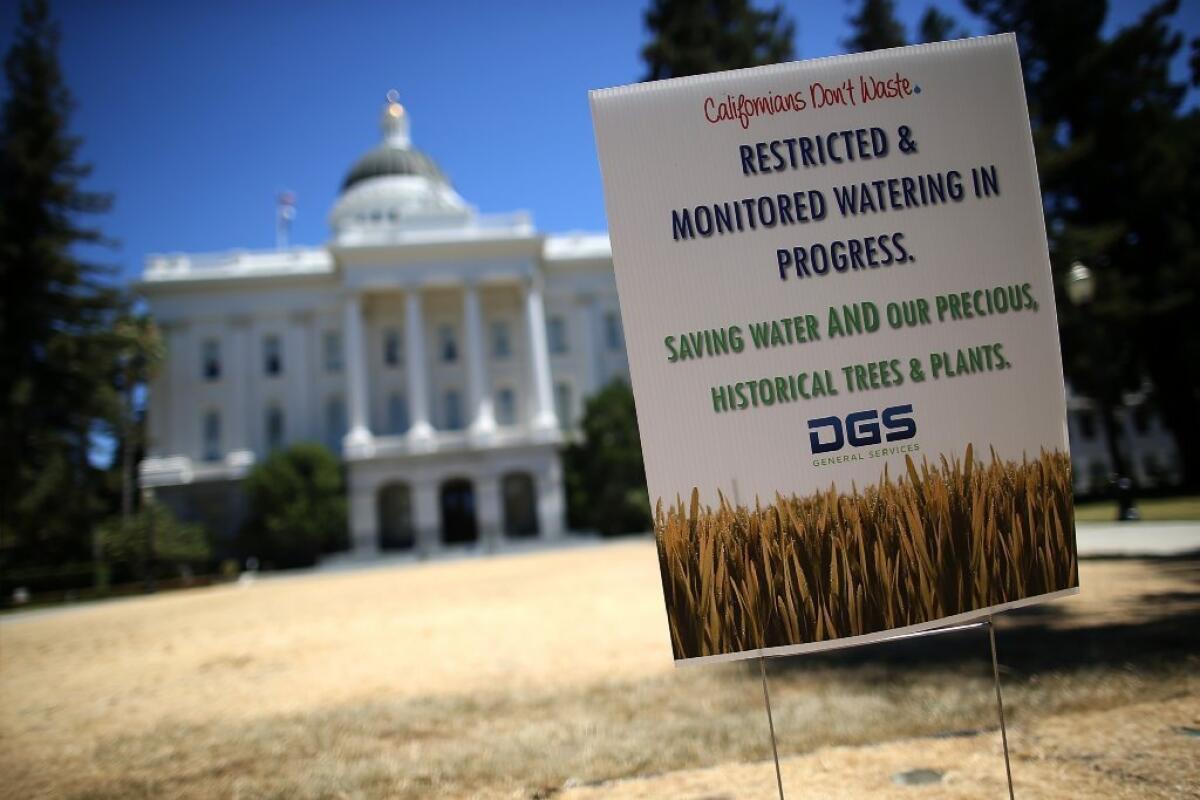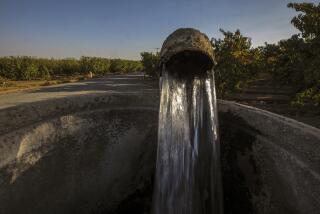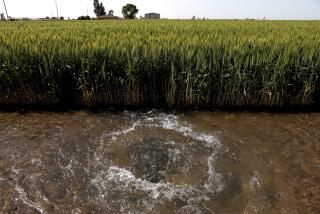Editorial: Water conservation in California can no longer be voluntary

Earlier this year, Gov. Jerry Brown urged Californians to voluntarily cut their water usage by 20% to help preserve the state’s already limited supply during this severe drought. But sometimes, asking nicely doesn’t work. Between January and May, water use was reduced by a measly 5%. Clearly, the voluntary approach isn’t enough — water use is even up in some communities — and the state needs to take a harder line.
Next week the State Water Resources Control Board will vote on whether to impose fines of up to $500 a day on people who blatantly waste water by, for example, spraying down sidewalks, or washing cars without a nozzle on the hose, or allowing sprinklers to overflow lawns. The board also would give local law enforcement agencies the authority to write citations for violations of conservation regulations. (Most people change their behavior after a warning, water officials note.) If approved, this would be the first time California has enacted baseline statewide rules on conservation. However, local water agencies still could — and should — pass even stricter limits on water use.
Water agencies need to do more than just ticket violators. They need to make sure conservation is on the mind of every Californian. That will require active enforcement, greater incentives to rip out lawns or buy water-saving appliances, higher bills for profligate usage and extensive, in-your-face public education on how to save water. The fact is, many cities already have strict rules in place, but they’re meaningless if residents are unaware of them or confident they won’t be enforced.
Californians also need to understand that water conservation is not just a short-term fix for a short-term problem. The state’s water agencies and political leaders need to push through long-term regulations and strategies that might be unpopular in wet years or might require significant investment for a later payoff, but that will continue to deliver water savings after today’s crisis has passed. For example, cities and counties could adopt ordinances that require drought-tolerant landscaping in new residential and commercial development, or the installation of weather-based sprinklers when a home is sold or renovated, much as some cities now mandate low-flow toilets. Water agencies could invest in systems that allow customers to track their water usage and how it compares with their neighbors’, or that send customers text or email alerts when their consumption spikes.
Of course, Californians must make conscious choices to save water. Mandatory measures and the threat of fines will help. But the state should also lay the foundation for a permanent change in the ways residents consume water.
Follow the Opinion section on Twitter @latimesopinion
More to Read
Sign up for Essential California
The most important California stories and recommendations in your inbox every morning.
You may occasionally receive promotional content from the Los Angeles Times.










